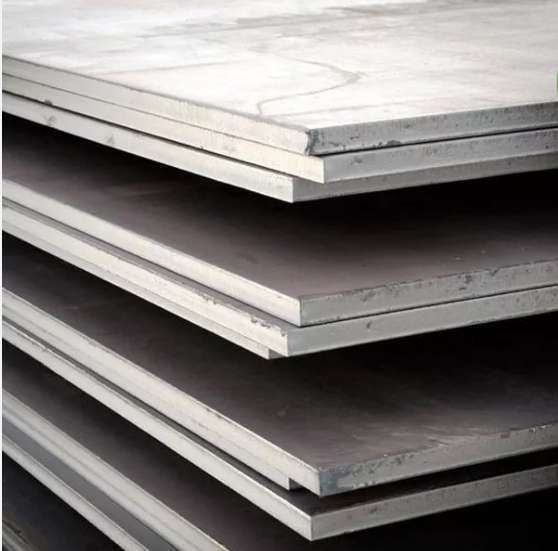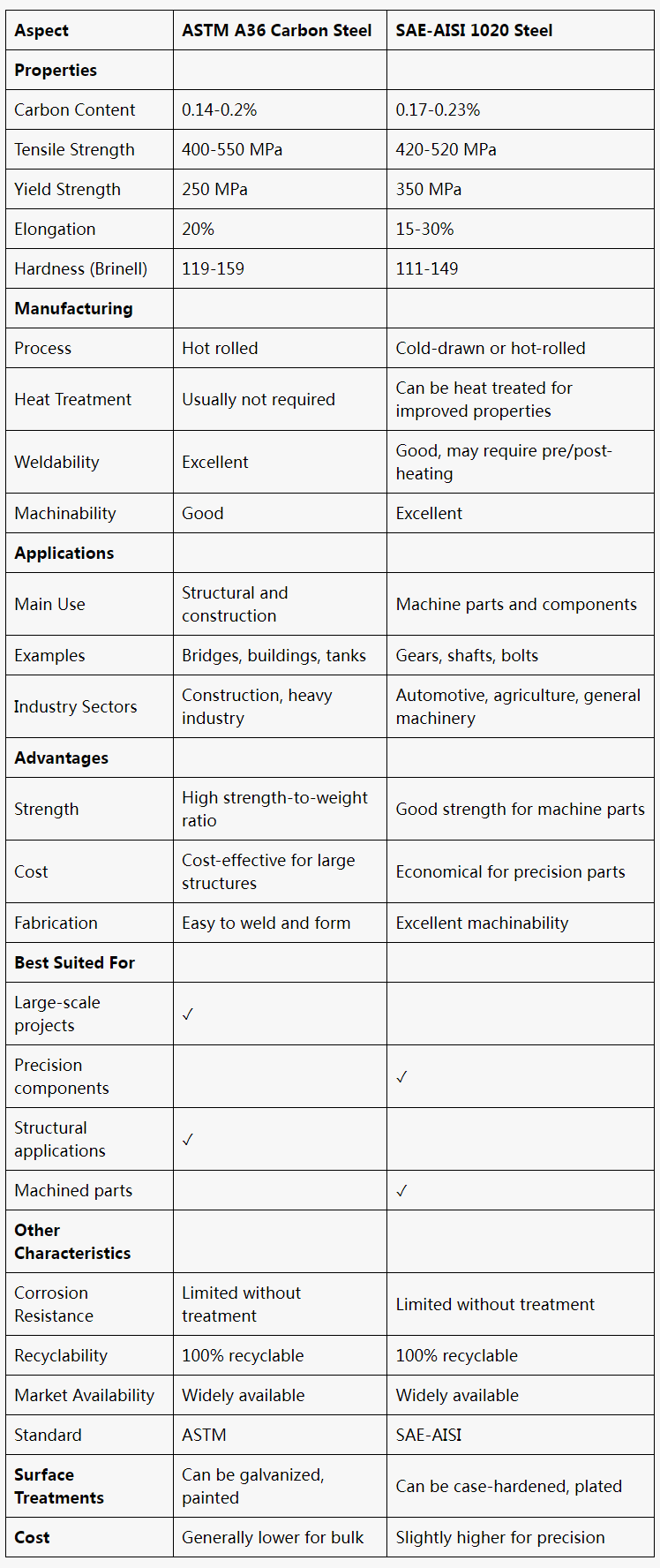When specifying carbon steel plate materials, distinguish between the ASTM A36 and SAE-AISI 1020 grades to ensure material suitability for your application. Both A36 and 1020 are low-carbon steels that are widely used in construction and manufacturing industries, but there are some differences in their chemical composition and properties.
ASTM A36 specification covers carbon structural steel shapes, plates, and bars of structural quality for use in riveted, bolted, or welded construction of bridges and buildings, and for general structural purposes. A36 steel has a carbon content between 0.25% and 0.3% and contains about 1% manganese. It has good strength, weldability, and ductility and is commonly used for structural applications in the construction, automotive, and oil and gas industries.Angle Steel, Rod is often made of a36 steel.

1020 steel sheet is a mild steel plate with a carbon content of 0.17%-0.23%. Steels less than 0.3% carbon are considered mild steels. This metal plate has good ductility due to its low carbon content. It is commonly used in building structures, automobiles, and machinery.
Comparing the properties of ASTM A36 Carbon Steel and SAE-AISI 1020 Steel.

ASTM A36 specification covers carbon structural steel shapes, plates, and bars of structural quality for use in riveted, bolted, or welded construction of bridges and buildings, and for general structural purposes. A36 steel has a carbon content between 0.25% and 0.3% and contains about 1% manganese. It has good strength, weldability, and ductility and is commonly used for structural applications in the construction, automotive, and oil and gas industries.Angle Steel, Rod is often made of a36 steel.

1020 steel sheet is a mild steel plate with a carbon content of 0.17%-0.23%. Steels less than 0.3% carbon are considered mild steels. This metal plate has good ductility due to its low carbon content. It is commonly used in building structures, automobiles, and machinery.
Comparing the properties of ASTM A36 Carbon Steel and SAE-AISI 1020 Steel.










